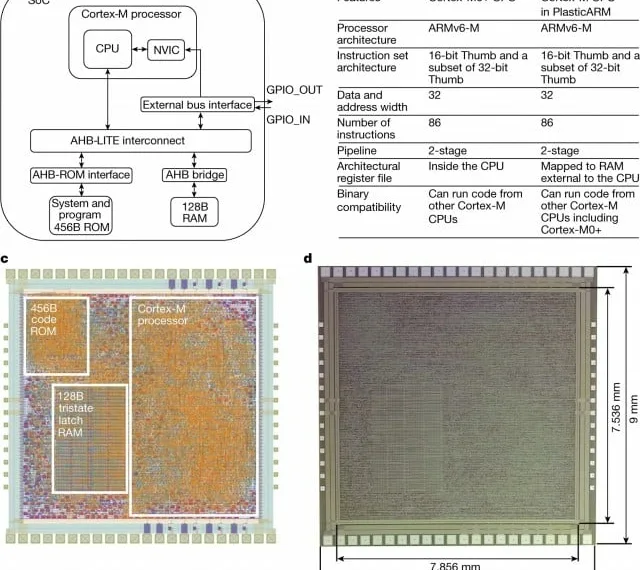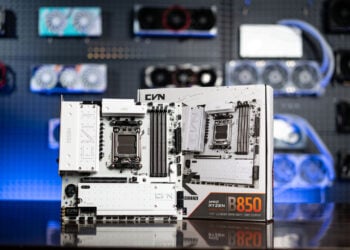A paper published this week in Nature by Arm Research and Cambridge UK-based PragmatIC revealed details of PlasticArm, a flexible Arm Cortex-M0 based system-on-chip (SoC) fabricated using thin-film transistors (TFT) on a flexible substrate.
The research, published in the journal Nature, notes that silicon has been the base element of semiconductors since the earliest days of digital computing. That’s thanks to two fundamental characteristics – silicon is the second-most common element on the planet, meaning it’s both cheap and in plentiful supply, and it can function as both an energy conductor and an energy insulator, depending on how it’s implemented.
But silicon isn’t suitable for every possible computing application. One of its main limitations is that it’s incredibly rigid and brittle, which means, for example, it cannot easily be integrated into biology. And although silicon is cheap enough to use products that are meant to last a while, such as computers and smartphones, they’re not cost-effective enough for dispensable products designed to be used once and then thrown away.
The researchers described their creation as “the world’s most complex flexible integrated circuit built with metal-oxide TFTs” that have been printed onto a plastic film. TFTs are thin-film transistors that can be built onto more flexible surfaces. By using plastic film as a base surface, it’s possible to manufacture chips more affordably and apply them in unique ways, they said.
The actual chip is no lightweight. The researchers said it’s a 32-bit microprocessor based on the ARM Cortex-MO+ chip, and it supports the ARMv6-M architecture. It features over 18,000 logic gates and has both internal memory and a controller. The researchers said future versions could incorporate as many as 100,000 logic gates before power consumption becomes a problem. They added that PlasticARM is already capable of “running programs from its internal memory.”
Other applications include chips for clothing. Smart clothes of the future might be able to detect the temperature outside, and expand or decrease the space between the fibers to make the wearer more comfortable. Then there are possible biological applications such as chips implanted into people’s brains, or biomonitors that could be placed onto an internal organ to monitor it.
Another key advantage of PlasticARM is that it was manufactured with existing technologies used to make silicon chips, so it can potentially benefit from the same innovations that are continually being made in that area.








